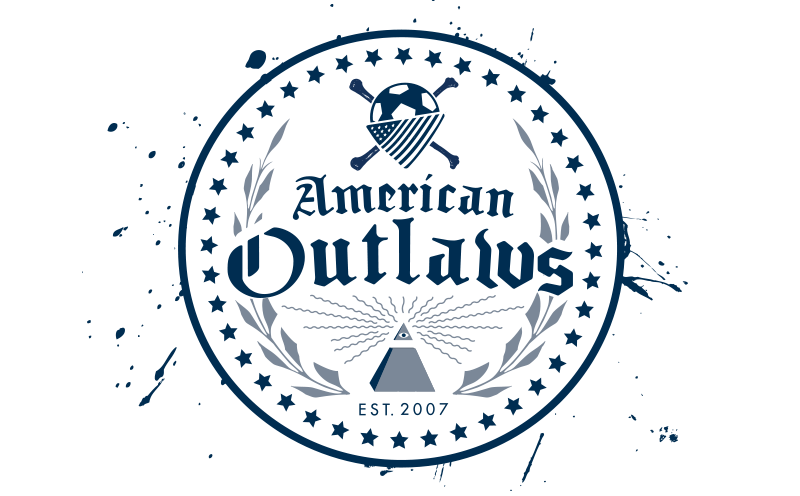Pictured above: AO St. Pete's Ron Chin with the U.S. Youth National Team ahead of the 2017 FIFA U17 World Cup.
Each May, Asian-American and Pacific Islander Heritage Month honors the contributions and influences of our fellow Americans to our country’s history, culture and achievements.
We’d like to honor AO St. Petersburg’s Ron Chin – a self-proclaimed “unabashed U.S. soccer evangelist” – for the massive role he’s played in growing support for our favorite teams for several decades.
To date, he’s amassed more than 100 caps in the stands of our men’s, women’s and youth national team games.
Ron, tell us how you got into soccer – playing, watching, or both.
1968, around age 12 or 13, in Long Island, New York, where I grew up. Back then, there were no organized youth soccer clubs, no middle school teams – just our high school team. I played pickup soccer in empty lots or playgrounds with my classmates, many of whom were immigrants or children of immigrants from Costa Rica, Guatemala, Ireland, Israel or Italy. Fifty years ago, Long Beach was a small, affluent community, and our parents worked as launderers, carpenters, janitors and deli workers – with hopes that my generation would live the American dream. Coming from different cultures and backgrounds, soccer taught us tolerance, cooperation, and teamwork – and we had a lot of fun, too.
The U.S. soccer team was virtually unheard of back then – how did you become a fan?
In high school, I played with Tony Crescitelli, the son of the school’s janitor. Tony’s dad didn’t speak English, but he pushed him to work hard in the classroom and on the pitch. Tony was an outstanding striker; he always mentioned playing for the U.S. Men’s National Team – that’s when I first learned we even had a national team. Tony went on to play for the MNT and in the old NASL alongside Johan Cryuff with the Washington Diplomats, and later the San Jose Earthquakes and a few other teams.
My first U.S. game was in 1973 – some of my high school teammates and I went to see the U.S. beat Poland 1-0 in New Britain, Connecticut. We were initially excited to see about 2,000 red and white shirts cheering loudly in the stands until we realized many of them were cheering for Poland.
The game that hooked me for good, though, was in November 1980 at the old Lockhart Stadium in Fort Lauderdale, Florida. Steve Moyers scored a brace and the U.S. finally beat Mexico for the first time in a World Cup qualifier in more than 40 years (we were already eliminated, though).
The final confirmation of my U.S. soccer fandom was while I was working overseas in London in the mid-1980s. I was the only “Yank” in an amateur league, which was made up of workers from most of the major international banks. Being Asian and a “Yank” exposed me to – and allowed me to overcome – the negative stereotypes of the American player. It was all about playing for respect and pride along with the occasional trash talking about the 1950 World Cup game versus England (now 1950, 2010, 2019 and counting).
How’d you get into AO?
I moved to Florida in 2008 and watched our MNT play in Tampa and Jacksonville, where I saw AO behind goal. I wanted to join, but didn’t till 2014 – better late than never, though!
What are you most proud of during your tenure as a chapter leader?
Here in Florida, we never miss being in the stands – with our drums, banners, and even bagpipes – for our U.S. Youth National Teams, from their camps to the annual Nike International Friendlies at the Premier Sports Campus, to CONCACAF’s U15, U17 and U20 championship tournaments at the IMG Academy.
We’re proud to be the first AO members to see Christian Pulisic, Tyler Adams, Josh Sargent, Sophia Smith, Sergiño Dest, Gio Reyna, Chris Richards, etc. play for the U.S. Our youth players and their families come from different backgrounds – and that diversity not only builds the future strength of our national teams, but also our country. We’ve gotten to meet many hardworking, devoted dual-national families, for whom playing for the U.S. is a proud validation of being Americans and a fulfillment of the American dream. As children of immigrants who have been through our own journeys and sacrifices, we appreciate and applaud their sacrifice – not just on a sporting level, but an emotional level, too.
What does soccer – all of it – mean to you?
When I started playing 50+ years ago, soccer was considered a “foreign,” “immigrant,” “un-American” or “commie” sport. After watching our national teams play home games with fans mostly rooting against them from the 1970s to today, nothing can be more patriotic than our teams representing the diversity of our country, no matter what their backgrounds may be.
I may not live long enough to witness our MNT win a World Cup, but as a chapter leader and unabashed U.S. soccer evangelist, I’ll continue to do what I can to grow U.S. soccer fandom, from the youth to the senior level, through AO so that future generations of fans can see it happen.


